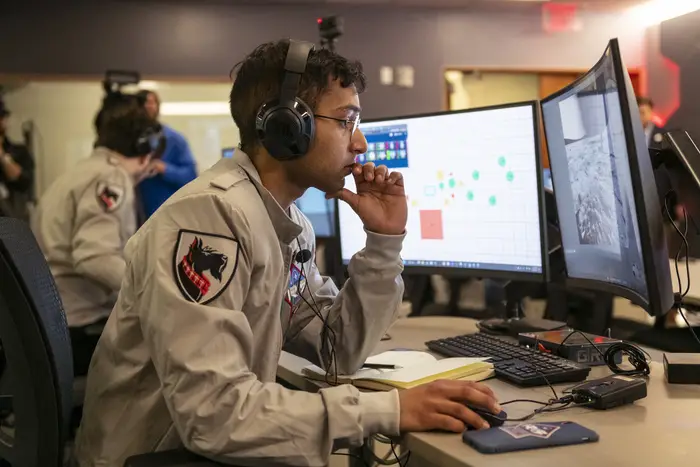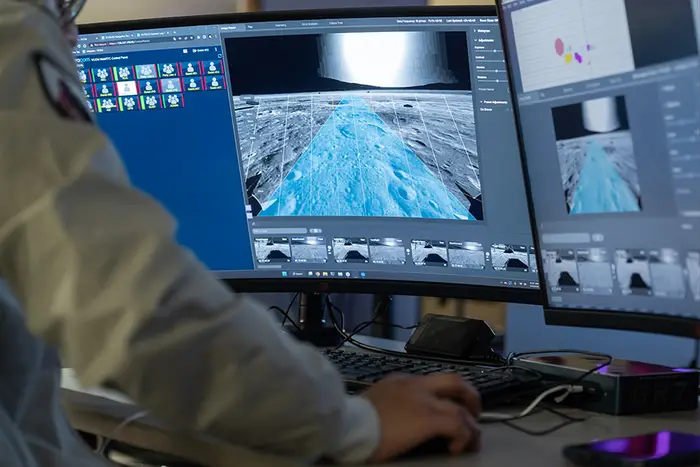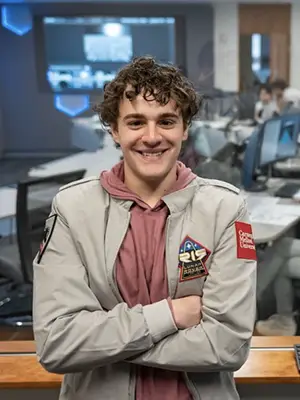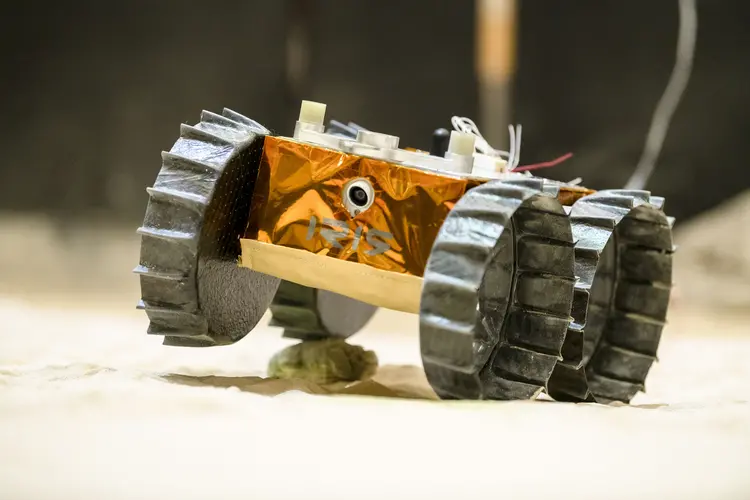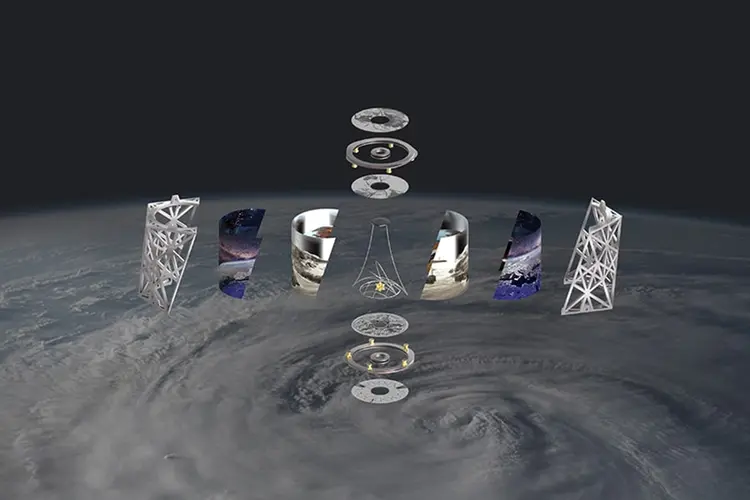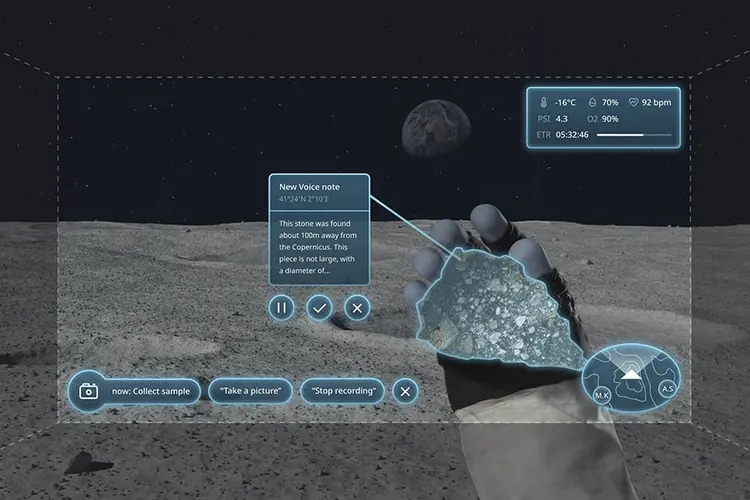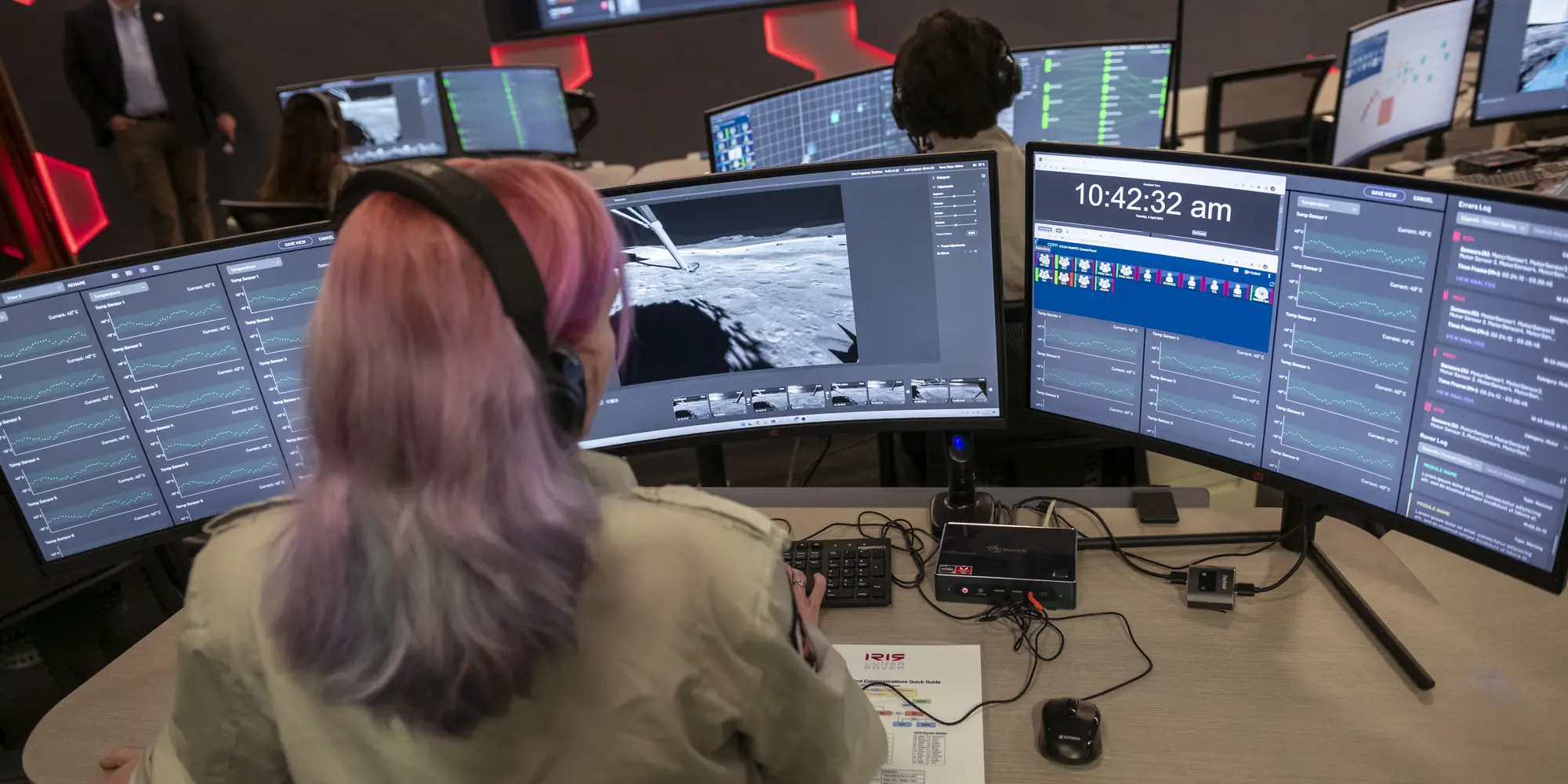
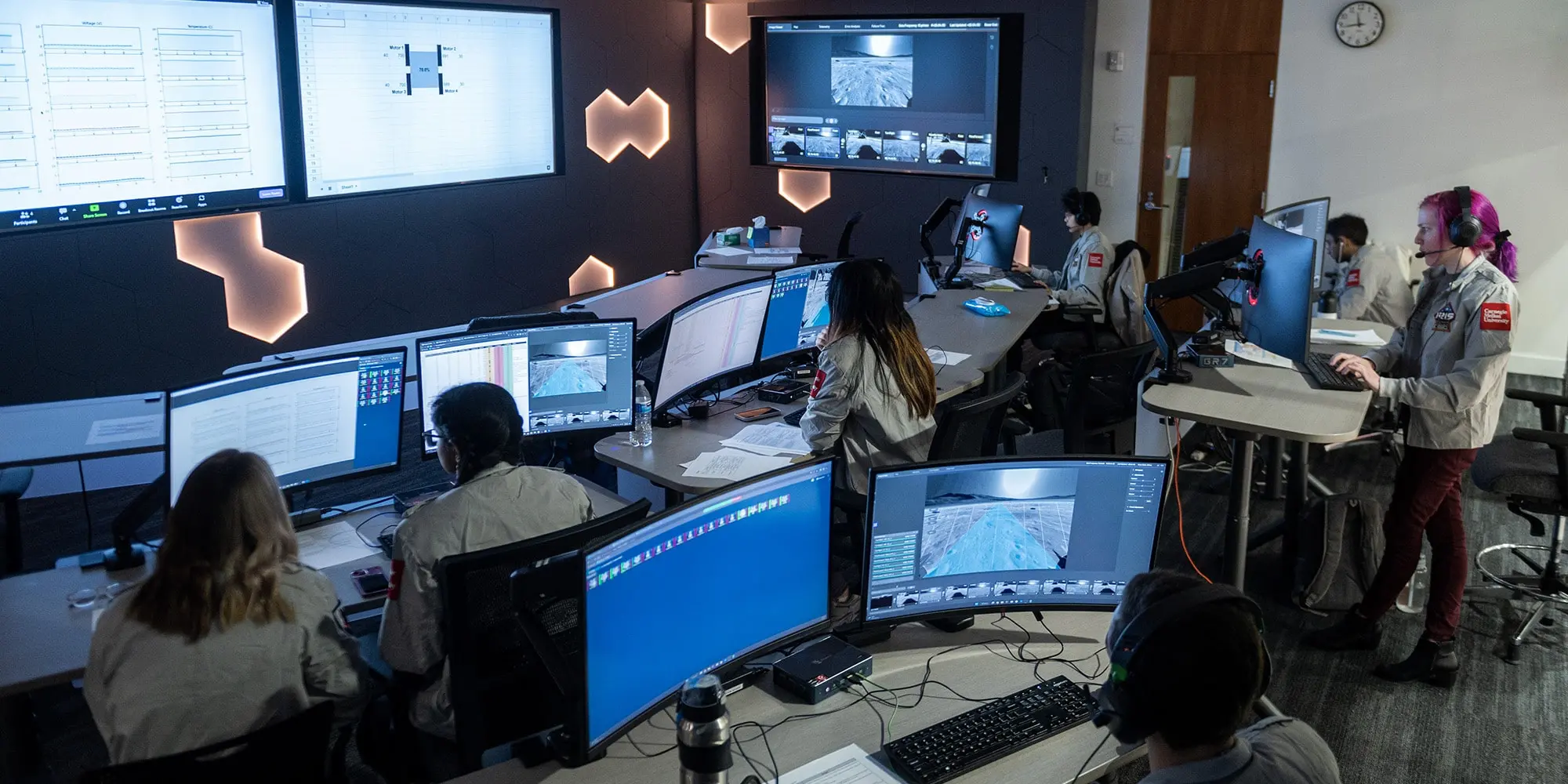
Mission Control: Reach Out and Touch Space
Media Inquiries
Not long ago, Gates 2109 looked like any other conference room at Carnegie Mellon University: full of furniture and white boards, ready for meetings, classes or whatever came its way. Now, it's Carnegie Mellon Mission Control, a new command hub in the Gates Center for Computer Science that provides state-of-the-art equipment for the crews of the Iris(opens in new window) and MoonRanger(opens in new window) missions, and future space robotics initiatives.
Designed with modularity in mind, Mission Control sits above the High Bay area — a hotbed of robotics research and development on campus — with giant windows overlooking a sand pit that the Iris team will use to mimic lunar conditions during its mission. Three giant flatscreen displays line the opposite wall, making it easy for everyone in the room to monitor the mission's progress. Just outside the room's main entry is a small space where visitors can sit and observe the action through a large window.
Hexagonal acoustic tiles line the walls, providing both sound-dampening practicality and a little shout out to the Iris project.
“The hexagonal pattern is reminiscent of the molecular structure of carbon fiber — one of the reasons Iris will be able to get to space, as it allowed us to construct a durable chassis and wheels that weigh very little,” said Iris Mission Control Lead Nikolai Stefanov, a senior majoring in physics(opens in new window) and computer science(opens in new window). “That's basically a carbon ring right there,” he said, pointing to the paneling.
Within the control center, operator workstations give crew members space to plan and direct the movements of the rovers, monitor their data and images and communicate with them and each other. Crew members will also see telemetry, localization data and Fault List Evaluator for Ultimate Response readouts at the workstations.
A flight director will oversee all the action from the back of the room — against the windows looking into the High Bay —perfectly positioned to constantly see what's happening.
Mission Control also contains a separate data room, with servers powering the main control room and a VPN connection to the landing companies that will relay communications from CMU to the lunar rovers. In the case of Iris, that's Astrobotic; for MoonRanger, it's NASA's Commercial Lunar Payload Services program.
William “Red” Whittaker(opens in new window), who heads the university’s Field Robotics Center(opens in new window) and plays a huge role in upcoming lunar initiatives, said this space is vital to mission success.
“There’s the sense that technology makes or breaks the mission. And, of course, it matters to get that right. But it pales in comparison to all the eventualities and contingencies that occur during the mission,” Whittaker said. “If something goes wrong, you have such a short time to address it, patch it and get into action. The only way to do that is to have your team co-located and you need a great facility that technically works in such a way that communications are impeccable and everybody has the same information.”
Carnegie Mellon Mission Control also represents an important milestone for students working on space robotics — and who may have been dreaming about space exploration their entire lives.
“From a team perspective, it makes the project feel very real,” Stefanov said. “It’s happening now. Having this dedicated space cements it as permanent. It isn't just a one-off class or assignment. It’s something that's here to stay. It becomes very much a gateway into space.
“Kids dreamed of becoming astronauts one day,“ he continued. “Well, this is a way you get to touch space like never before."
Editors note: This story was originally published(opens in new window) in The LINK magazine. For more stories like this, check out The LINK(opens in new window).
